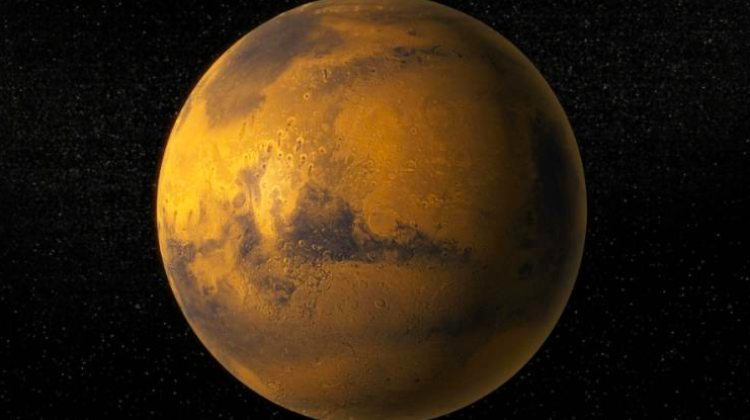"Eagle" - Mars lander in the finals of international competition
 Photo: Fotolia
Photo: Fotolia
Students from the Wrocław University of Science and Technology have designed a Mars lander that can deliver not only a significant payload, but also people to Mars. In August, their lander "Eagle" will compete in the finals of the contest organized by the Mars Society and NASA.
The conquest of Mars seems to become more real, but one of the challenges is to create a lander that will deliver heavy equipment and people to the surface. In the "Red Eagle" - International Student Engineering Contest to Design Mars Lander, organized by the Mars Society and NASA, students from around the world were tasked with creating a lander concept that would use the technologies available in the coming years and be built at the lowest possible cost, and would enable delivery of at least 10 tons of cargo to the Red Planet.
According to Justyna Pelc, vice president of the Off-Road Science Club at Wrocław University of Science and Technology, it was a big challenge. Until now nothing that heavy has landed on Mars, and the largest payload delivered to that planet was the Mars rover Curiosity, weighing about a ton.
Wrocław University of Science and Technology students designed a lander with a modular structure. One of the modules is a capsule containing all the electronics and the cargo hold, and after conversion into a life support capsule, it can be used to transport people. The second module will be used for landing.
Students want to use aerodynamic braking with a HIAD module (Hypersonic Inflatable Aerodynamic Decelerator) in their project. This module allows to increase the effective braking surface by filling a dozen inflatable rings of increasing diameter with gas, forming a cone.
"This is one of the solutions created by NASA. It is a large inflatable cushion deployed during landing to increase the braking surface. Thanks to this, the lander can reduce speed to a greater extent" - explains Pelc. After completing the task, the module is discarded, which allows to reduce the weight of the entire lander and complete the landing procedure using engines.
The development of the deceleration method, reducing speed of the ship while entering the atmosphere of Mars, was the biggest challenge for students, because it is very difficult to slow down in the atmosphere of that planet.
"It`s a huge load, and the atmosphere of Mars does not make it easy to land on this planet. That was the problem we worked on for the longest time. We considered a dozen solutions before we came up with one that can actually work, according to our calculations" - adds the co-author of the project.
Students also want to use 3D printing technology to "print" electronics, while the hold has been designed to function as a cargo lift, which would facilitate unloading on the planet.
The "Eagle" is also designed to be adapted to transport people to Mars. The students designed a module that sustains life during a 10-month mission. "Among the first flights, the manned ones will probably not be possible yet" - adds Pelc. She notes that the way the lander is designed allows to convert the module used to transport rovers and other equipment into a life support module.
According to another team member Joanna Kuźma, this module will contain a number of life support systems, including the air scrubbers, water recirculation, heat exchange, power supply. "It will be a very complex module, designed to create conditions that will enable a person to function on a very unfriendly planet" - she adds.
When designing the module, students took into account not only physiological but also psychological considerations. They used NASA research, which describes the minimum space needed for people to feel safe and at home in such a lander. They also had to take other problems into account, such as reduced gravity on Mars.
"Reduced gravity means that gases do not move like they do on Earth, where, for example, on Earth carbon dioxide circulates under the influence of gravity. But with reduced gravity, there is no such air movement you must use fans to ensure that astronauts do not suffocate in their sleep" - Kuźma explains.
The team that designed the lander included students from various faculties of Wrocław University of Science and Technology - future mechanics, electronic engineers, material engineering specialists and physicists. The students cooperated with specialists from the European Space Agency (ESA), CERN and Mars Society Poland.
Their lander concept was highly rated among the 15 projects and advanced to the final five. The competition finals are scheduled for the end of August during the Mars Society international convention, which will take place in Pasadena, U.S.. The main prize in the competition is 10,000. dollars.
"We hope that our project will win. We think that it is very well prepared and that`s the opinion we heard from specialists, who cooperated with us on it" - concludes Justyna Pelc.
PAP - Science in Poland, Kamil Szubański
szu/ ekr/ kap/
tr. RL
Przed dodaniem komentarza prosimy o zapoznanie z Regulaminem forum serwisu Nauka w Polsce.















